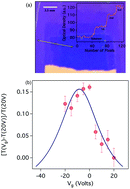Dongdong Ye, Weize Wang, Haiting Zhou, Huanjie Fang, Jibo Huang, Yuanjun Li, Hanhong Gong, Zhen Li,


https://www.sciencedirect.com/science/article/abs/pii/S0257897220305053
A novel approach was presented to characterize microstructural features of thermal barrier coatings (TBCs) using terahertz spectroscopy based on machine learning algorithms. In this study, the microstructures of yttria-stabilized zirconia (YSZ) atmospheric-plasma-sprayed (APS) thermal barrier coatings were regulated by choosing different kinds of spray powders, distances and power during processing. A terahertz time-domain spectroscopy system configurated transmission mode with an incidence angle of 0° was employed to estimate terahertz properties of porous YSZ ceramic coatings, including refractive index, extinction coefficient and relative time-domain broadening ratio. The variation tendency of terahertz properties of YSZ ceramic coatings with different microstructure features (porosity, pore to crack ratio, pore size) were investigated. Principal component analysis (PCA) method was adopted to reduce the dimensions of refractive index and extinction coefficient spectra data at the range of 0.6–1.4 THz and to ensure that different terahertz properties could be treated as inputs with similar weights during modeling. Three models (multiple linear regression (MLR), back-propagation (BP) neural network and support vector machine (SVM)) were set up to conduct regression analysis. As a result, according to the contribution rates of eigenvectors, the top one principal component of refractive index spectra data and the top two principal components of extinction coefficient spectra data were selected as the model inputs. The correlation coefficient comparisons showed that the characterization accuracy of PCA-SVM reached by over 95% and outperformed the other models. Finally, this study proposed that THz nondestructive technology combined with machine learning technique is efficient and feasible for microstructural features characterization and has profound implications for the structure integrity of TBCs evaluation in gas turbine blades.








